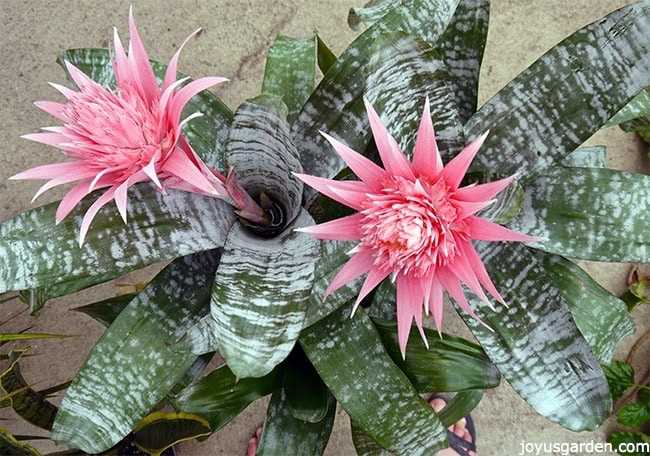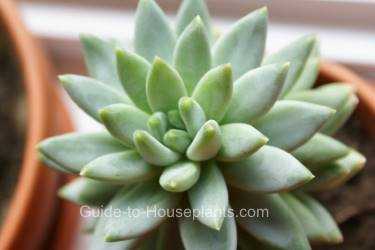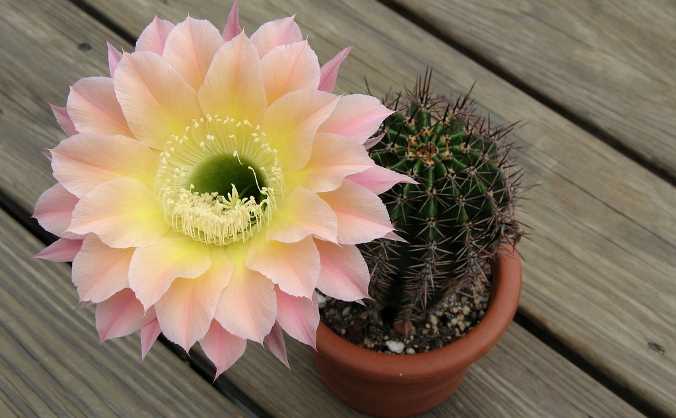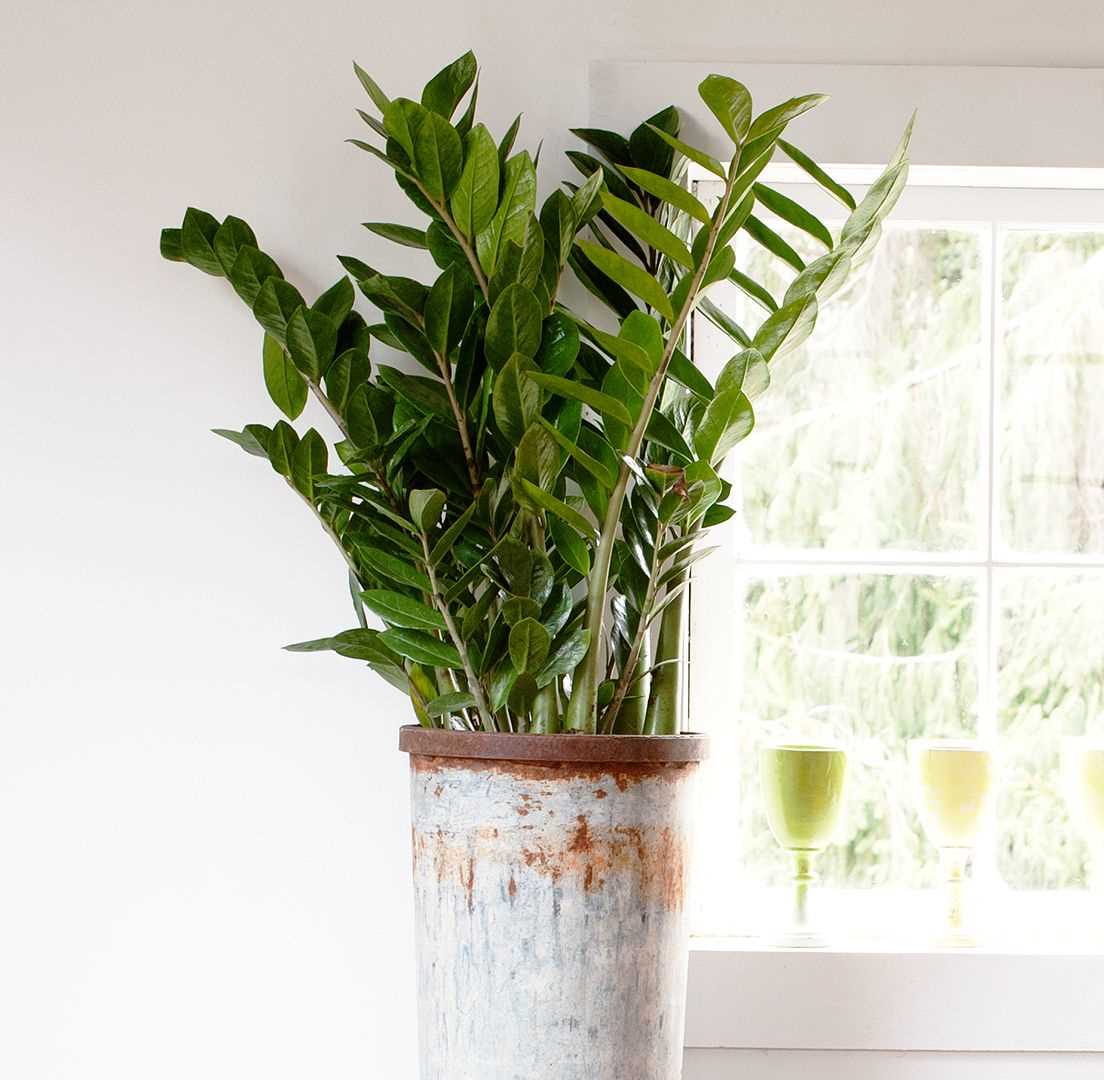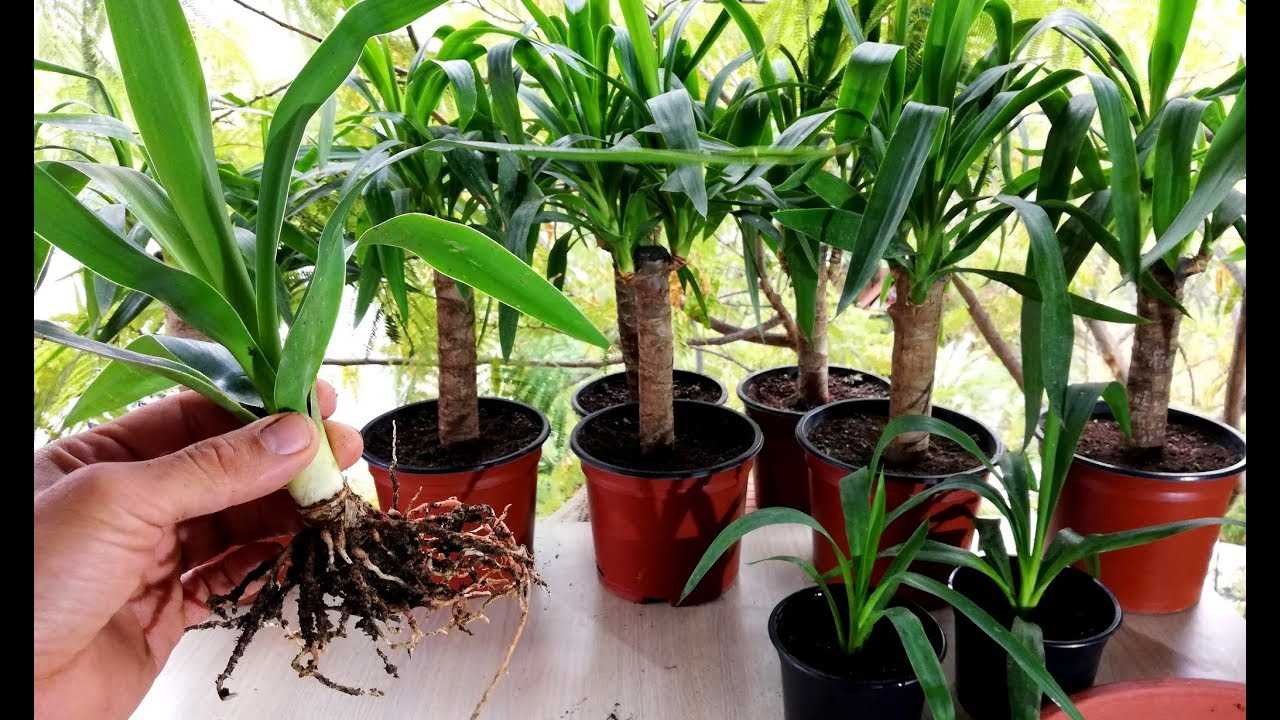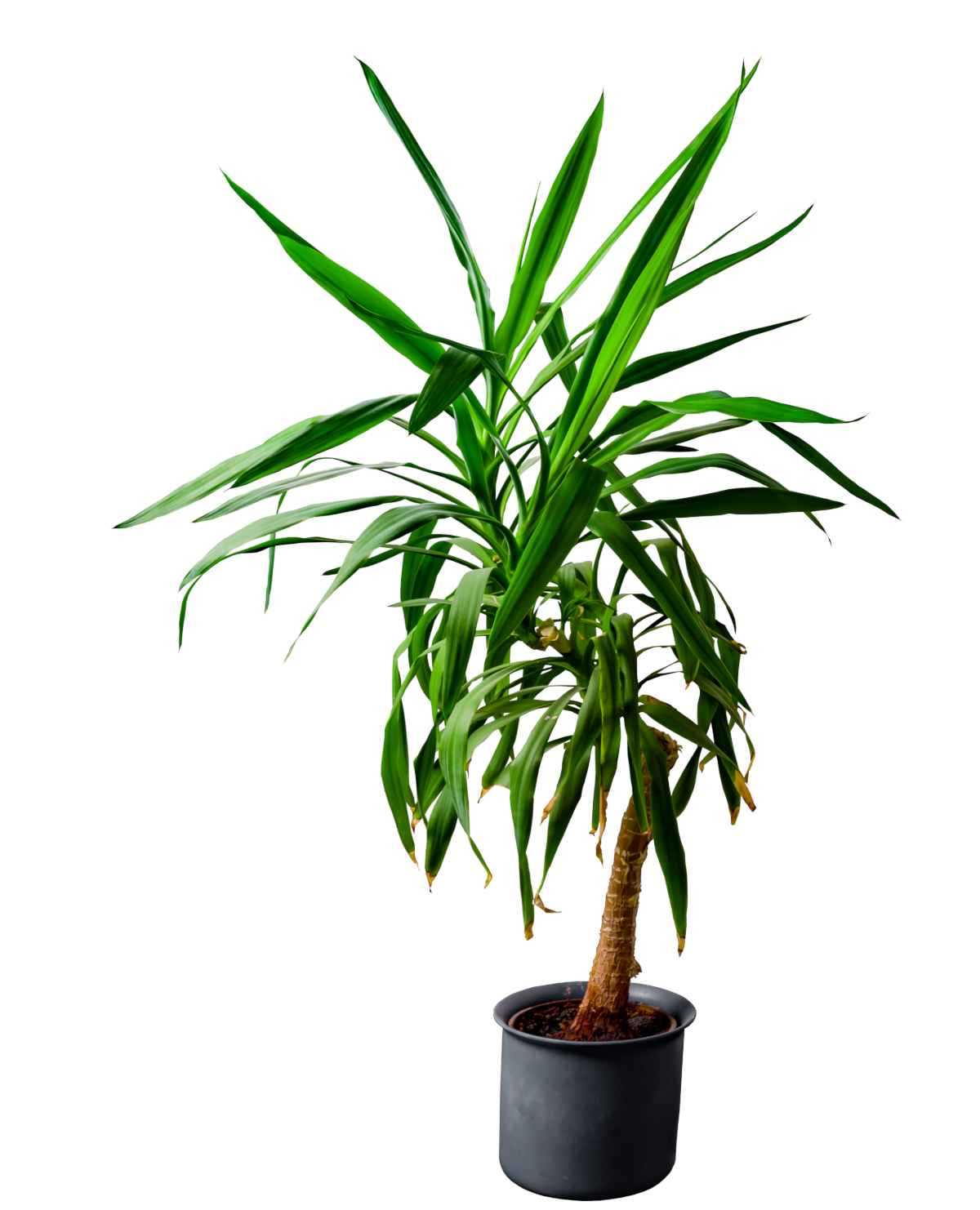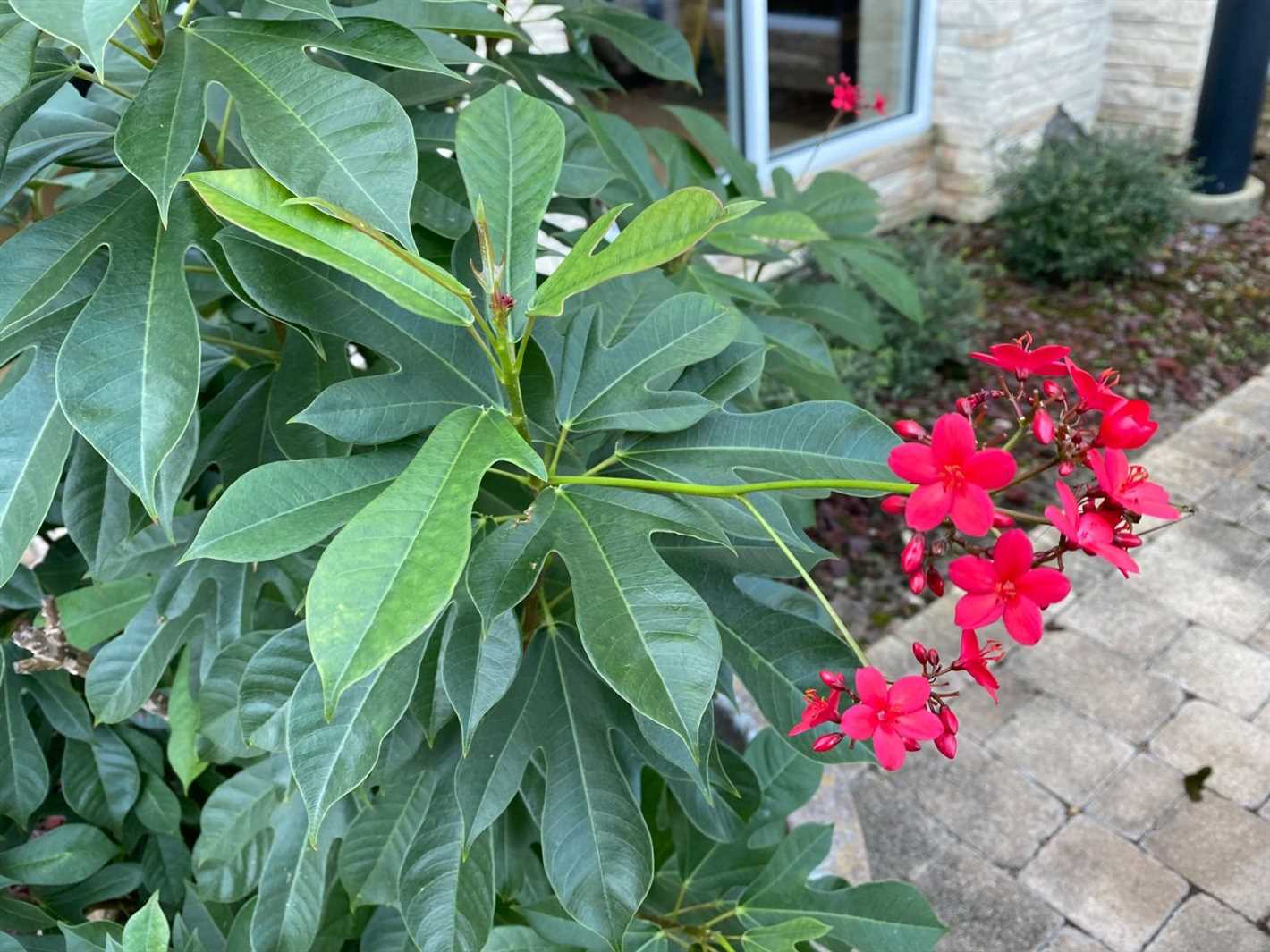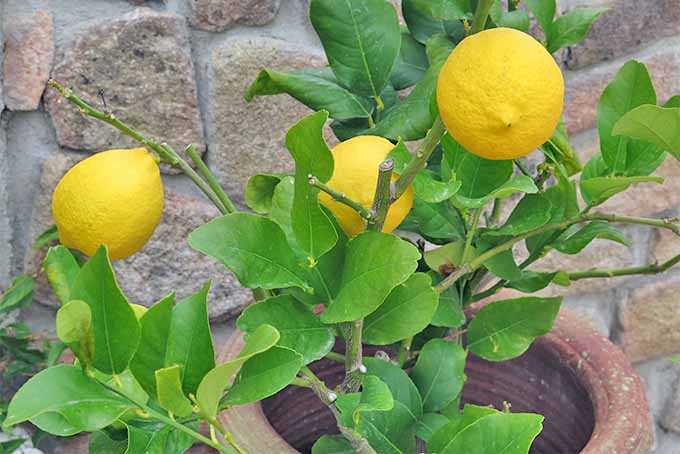- Polyscias Care: Watering and Light Requirements
- Watering Requirements
- Light Requirements
- Identifying Polyscias Species: Leaf Shape and Color
- Leaf Shape
- Leaf Color
- Conclusion
- Understanding Polyscias Growth Patterns: Compact vs. Weeping
- Compact Growth Pattern
- Weeping Growth Pattern
- Propagating Polyscias: From Seeds and Cuttings
- Propagating Polyscias from Seeds
- Propagating Polyscias from Cuttings
- Common Pests and Diseases Affecting Polyscias
- Pests:
- Diseases:
- Polyscias Pruning and Maintenance Tips
- 1. Pruning:
- 2. Watering:
- 3. Light and Temperature:
- 4. Fertilizing:
- 5. Pest Control:
- 6. Repotting:
- Polyscias as Decorative Indoor Plants
- Benefits of Polyscias as Indoor Plants
- Tips for Caring for Polyscias Indoors
- Popular Varieties of Polyscias
- Q&A:
- What is Polyscias?
- How do I identify different species of Polyscias?
- What are the care requirements for Polyscias plants?
- Can Polyscias be grown indoors?
- How do I propagate Polyscias plants?
- What are some common pests and diseases that affect Polyscias plants?
- Are Polyscias plants toxic to pets?
- Video: The SIX Most Reliable Terrarium Plants
Polyscias, also known as the Aralia plant, is a popular choice for indoor plant enthusiasts due to its elegant and lush appearance. With over 70 different species, Polyscias offers a wide variety of options to choose from, each with its own unique characteristics. Whether you’re a seasoned plant parent or just starting out, this guide will provide you with the essential information you need to care for and identify different Polyscias species at home.
When it comes to caring for Polyscias, it’s important to consider their natural habitat. Most Polyscias species originate from tropical regions, which means they thrive in environments with high humidity and indirect light. To provide the perfect conditions for your Polyscias, place them in a well-lit area away from direct sunlight. You can also increase humidity by placing a tray of water near the plant or using a humidifier.
In terms of watering, Polyscias prefer consistently moist soil. However, it’s crucial not to overwater them, as this can lead to root rot. To prevent this, ensure proper drainage by using well-draining soil and watering only when the top inch of soil feels dry. Additionally, misting the leaves occasionally can help maintain moisture levels and prevent browning.
Identifying different Polyscias species can be a fun and rewarding activity. One way to distinguish between species is by examining their foliage. Some Polyscias species have small, delicate leaves, while others have larger, more robust leaves. Pay attention to the shape, color, and texture of the leaves to help narrow down the possibilities.
Another distinguishing feature of Polyscias species is their growth habit. Some species, like Polyscias fruticosa, have a more upright and compact growth habit, making them suitable for smaller spaces. Others, like Polyscias guilfoylei, have a more sprawling and bushy growth habit, which can add a touch of drama to any room.
By following these care tips and taking note of the unique characteristics of different Polyscias species, you’ll have all the tools you need to successfully care for and identify these beautiful plants at home. So go ahead, bring a touch of the tropics into your space with a stunning Polyscias plant!
Polyscias Care: Watering and Light Requirements
Watering Requirements
Polyscias plants require regular watering to thrive. However, it’s important not to overwater them, as excessive moisture can cause root rot. Here are some tips for watering your polyscias:
- Allow the top inch of soil to dry out before watering.
- Water the plant thoroughly until water drains out of the bottom of the pot.
- Avoid letting the plant sit in standing water, as this can lead to root rot.
- During the winter months, reduce the frequency of watering, as the plant’s growth slows down.
Light Requirements
Polyscias plants prefer bright, indirect light. Here are some guidelines to ensure your polyscias gets the right amount of light:
- Place the plant near a north or east-facing window to provide it with bright, indirect sunlight.
- Avoid placing the plant in direct sunlight, as this can scorch the leaves.
- If the plant starts leaning towards the light source, rotate it periodically to ensure even growth.
- If you notice that the leaves are turning yellow or the plant is not growing, it may be an indication of insufficient light. In this case, consider moving the plant to a brighter location.
By following these watering and light requirements, you can provide the optimal conditions for your polyscias plant to thrive and grow well at home.
Identifying Polyscias Species: Leaf Shape and Color
When it comes to identifying different species of Polyscias plants, one of the key factors to consider is the shape and color of their leaves. While there are many variations in leaf characteristics within the Polyscias genus, there are some general patterns that can help you distinguish between different species.
Leaf Shape
Polyscias leaves can come in a variety of shapes, ranging from simple to compound. Simple leaves are those that have a single leaf blade, while compound leaves are composed of multiple leaflets. Within the Polyscias genus, you will typically find compound leaves.
Compound leaves of Polyscias species will have multiple leaflets attached to a central stem, known as a rachis. The leaflets may be arranged in a pinnate or palmate pattern. Pinnate leaves have leaflets arranged in opposite pairs along the rachis, resembling a feather, while palmate leaves have leaflets radiating out from a central point, resembling an open hand.
Leaf Color
The color of Polyscias leaves can vary widely between species. While most Polyscias species have green leaves, the shade of green can differ. Some species have light green leaves, while others have darker, more vibrant green leaves. Leaf color can also be influenced by other factors such as light conditions and nutrient availability.
In addition to various shades of green, some Polyscias species have variegated leaves. Variegated leaves have a pattern of different colors, typically white or yellow, mixed in with the green. The variegation can take different forms, such as stripes, spots, or even marbling.
It’s important to note that leaf color can also change throughout the year or as the plant matures. Younger leaves may have a different color compared to older leaves, so it’s essential to consider the overall pattern of leaf color on the plant.
Conclusion
Leaf shape and color are important characteristics when it comes to identifying different Polyscias species. By examining the shape of the leaves and paying attention to their color, you can start to narrow down the possibilities and get a better idea of which species you might have. However, it’s crucial to remember that leaf characteristics can vary within species and might be influenced by various factors, so additional research may be necessary to make a definitive identification.
Understanding Polyscias Growth Patterns: Compact vs. Weeping
Polyscias, also known as Aralia or Ming Aralia, is a popular houseplant with various species that exhibit different growth patterns. Two common types of growth patterns found in Polyscias plants are compact and weeping.
Compact Growth Pattern
- Polyscias plants with a compact growth pattern have dense foliage and are more upright in appearance.
- These plants tend to have shorter internodes, resulting in a bushier and more compact overall shape.
- The leaves of compact Polyscias plants are usually smaller in size and grow closer together on the stem.
- Due to their compact nature, these plants are suitable for small spaces and can be easily maintained through regular pruning.
- Some popular Polyscias species with a compact growth pattern include Polyscias fruticosa and Polyscias balfouriana.
Weeping Growth Pattern
- Polyscias plants with a weeping growth pattern have longer and more flexible stems that cascade downward.
- The internodes on these plants are usually longer, allowing the foliage to spread out and hang gracefully.
- The leaves of weeping Polyscias plants are generally larger and more spaced out on the stem.
- Due to their cascading nature, these plants are often used as hanging or trailing plants to add an elegant touch to any indoor space.
- Some popular Polyscias species with a weeping growth pattern include Polyscias scutellaria and Polyscias guilfoylei.
Understanding the growth patterns of different Polyscias species can help you choose the right plant for your home or office. Whether you prefer a compact plant for a small space or a weeping plant to add a touch of elegance, there is a Polyscias species that will suit your needs.
Propagating Polyscias: From Seeds and Cuttings
Propagating Polyscias is a rewarding way to expand your collection of these beautiful plants. While they can be propagated from both seeds and cuttings, each method comes with its own set of steps and considerations. Here, we will discuss how to propagate Polyscias plants using seeds and cuttings.
Propagating Polyscias from Seeds
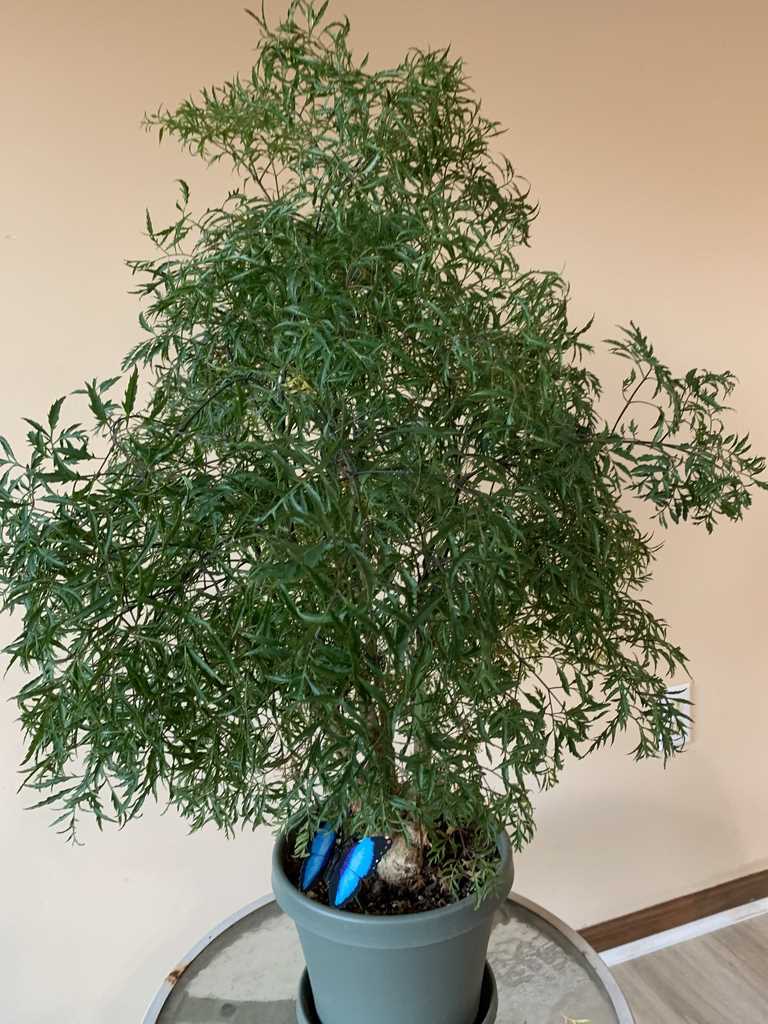
Propagating Polyscias from seeds can be a bit time-consuming but rewarding. Here are the steps to follow:
- Collect mature seeds from a healthy Polyscias plant. The seeds are usually small and brown.
- Prepare a well-draining potting mix that consists of a blend of peat moss, perlite, and sand.
- Sow the seeds on the surface of the potting mix and lightly cover them with a thin layer of soil.
- Maintain the temperature in the growing area between 75-80°F (24-27°C).
- Keep the soil consistently moist but not waterlogged.
- Germination should occur within 2-4 weeks.
- Once the seedlings have developed several true leaves, you can transplant them into individual pots.
- Continue to care for the seedlings as you would for mature Polyscias plants.
Propagating Polyscias from Cuttings

Propagating Polyscias from cuttings is a quicker method compared to propagating from seeds. Here’s how to do it:
- Take a 4-6 inch (10-15 cm) stem cutting from a healthy Polyscias plant. Make sure the cutting has at least 2-3 pairs of leaves.
- Remove the leaves from the lower half of the stem.
- Dip the cut end of the stem in a rooting hormone powder to promote root development.
- Plant the cutting in a well-draining potting mix and firm the soil around it.
- Place the potted cutting in a warm, humid location with bright indirect light.
- Keep the soil evenly moist and mist the cutting regularly to maintain humidity.
- Roots should start to develop after 4-6 weeks.
- Once the cutting has established roots, you can transplant it into a larger pot or your desired planting location.
Remember to provide the necessary care and attention to your newly propagated Polyscias plants as they establish their root systems. With time and proper care, you will have a thriving collection of Polyscias plants.
Common Pests and Diseases Affecting Polyscias
Polyscias plants are generally known for being hardy and resistant to pests and diseases. However, they can still be affected by a few common problems. Here are some of the most common pests and diseases that can affect polyscias:
Pests:
- Spider mites: These tiny pests can infest polyscias and cause damage by feeding on the plant sap. They create small webs and can cause yellowing and wilting of the leaves. Regularly check the undersides of the leaves for signs of infestation.
- Mealybugs: Mealybugs are small insects that can form white cotton-like masses on polyscias plants. They suck the sap from the plant, causing stunted growth and leaf yellowing. Use a cotton swab dipped in rubbing alcohol to remove them manually.
- Aphids: Aphids are small, soft-bodied insects that can infest polyscias plants, particularly the new growth. They can cause distortion of the leaves and can transmit viral diseases. Use insecticidal soap or neem oil to control them.
Diseases:
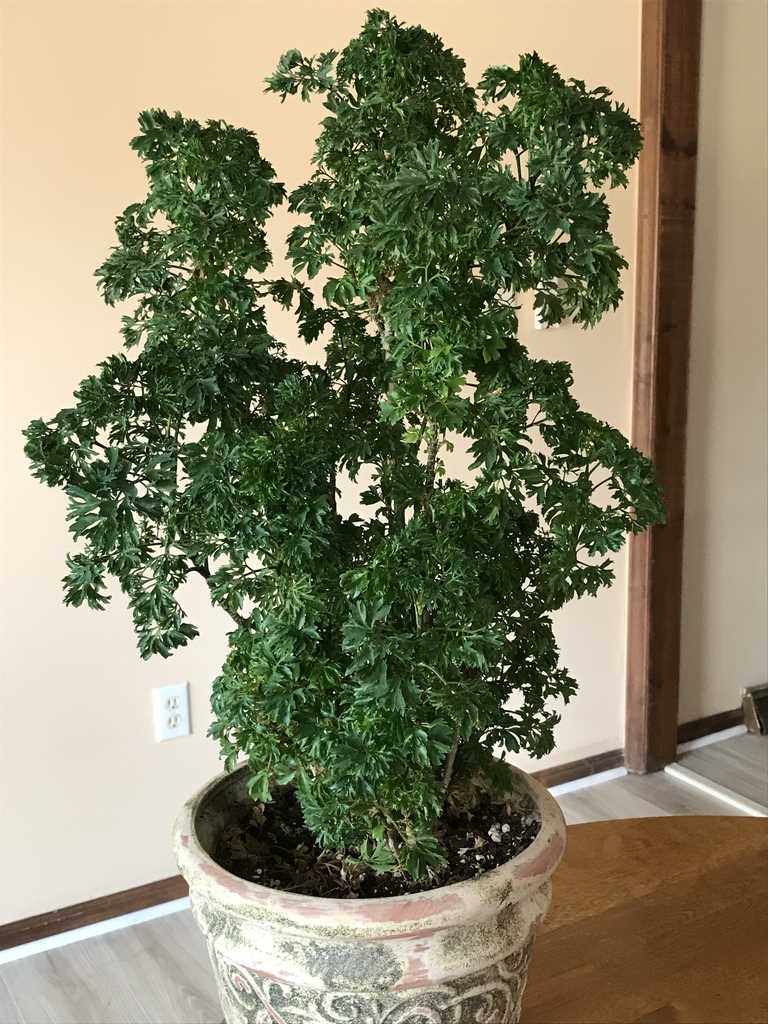
- Root rot: Polyscias plants are susceptible to root rot if the soil is kept too wet. This can cause the roots to become mushy and can lead to the plant’s decline. Avoid overwatering and make sure the soil has good drainage.
- Fungal leaf spot: This disease is characterized by the appearance of small, dark spots on the leaves of polyscias plants. It is caused by fungi and can spread rapidly in humid conditions. Remove affected leaves and treat with a fungicide.
- Leaf drop: Polyscias plants can sometimes experience leaf drop due to stress or environmental changes. This can be caused by sudden temperature fluctuations, overwatering, or insufficient light. Ensure that the plant is receiving adequate care and maintain a stable environment.
Regularly inspecting your polyscias plants for signs of pests and diseases is essential. Early identification and intervention can help prevent the spread of infestations or diseases and ensure the health and vitality of your polyscias plants.
Polyscias Pruning and Maintenance Tips
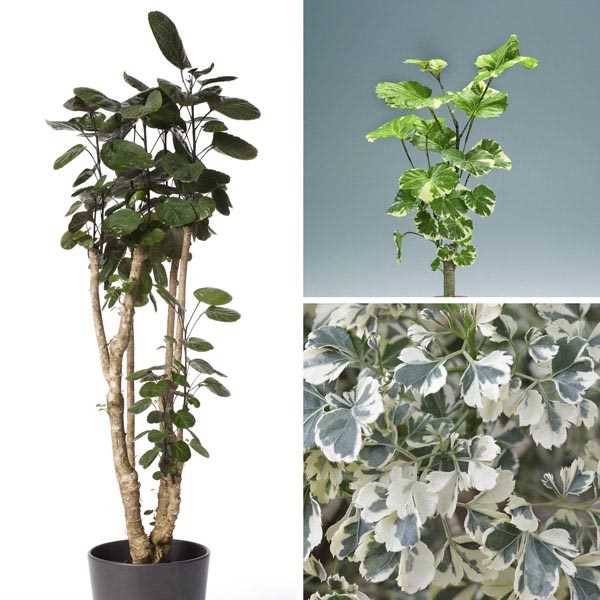
1. Pruning:
Regular pruning is important for maintaining the health and appearance of your Polyscias plant. Here are some tips for pruning:
- Prune your Polyscias plant in the spring or early summer when it is actively growing.
- Remove any dead or diseased branches using clean, sharp pruning shears.
- Trim back any overgrown branches to maintain a desired shape and size.
- To encourage bushiness, pinch back the tips of the branches.
- Avoid pruning more than one-third of the plant at a time to prevent stress.
2. Watering:
Proper watering is crucial for the healthy growth of your Polyscias plant. Here are some watering tips:
- Water your Polyscias plant when the top inch of soil feels dry to the touch.
- Avoid overwatering, as it can lead to root rot and other fungal diseases.
- Make sure to use well-draining soil to prevent waterlogged roots.
- During winter, reduce the frequency of watering to prevent waterlogging.
3. Light and Temperature:
Polyscias plants prefer bright, indirect light and moderate temperatures. Here are some tips for light and temperature:
- Place your Polyscias plant near a window with filtered sunlight.
- Avoid placing it in direct sunlight, as it can scorch the leaves.
- Maintain a temperature between 65°F and 75°F (18°C and 24°C) during the day.
- Avoid exposing the plant to temperatures below 55°F (13°C) or drafty areas.
4. Fertilizing:
Regular fertilizing helps provide essential nutrients for the growth of your Polyscias plant. Here are some fertilizing tips:
- Use a balanced, water-soluble fertilizer with an NPK ratio of 20-20-20.
- Fertilize your Polyscias plant once a month during the growing season (spring to summer).
- Follow the instructions on the fertilizer package for proper dilution and application.
- Avoid overfertilizing, as it can cause salt buildup and damage the plant.
5. Pest Control:
Regularly inspect your Polyscias plant for any signs of pests and take immediate action if necessary. Here are some pest control tips:
- Check the leaves, stems, and soil for pests such as aphids, mealybugs, and spider mites.
- If you notice any pests, isolate the plant to prevent the infestation from spreading.
- Use insecticidal soap or neem oil to treat the affected plant parts.
- Follow the instructions on the pesticide packaging for proper application.
6. Repotting:
Repotting is necessary when your Polyscias plant outgrows its current pot. Here are some repotting tips:
- Choose a pot that is one size larger and has drainage holes at the bottom.
- Carefully remove the plant from its current pot, gently loosening the roots if necessary.
- Place a layer of well-draining soil at the bottom of the new pot.
- Position the plant in the center of the new pot and fill in the remaining space with fresh potting soil.
- Water the plant thoroughly after repotting and allow it to adjust to its new container.
By following these pruning and maintenance tips, you can ensure the health and longevity of your Polyscias plant. Regular care and attention will help your plant thrive and beautify your indoor space.
Polyscias as Decorative Indoor Plants
Polyscias, also known as Aralia, are popular indoor plants due to their attractive foliage and easy care requirements. These plants can add a touch of tropical to any space, whether it’s a home, office, or other indoor environment.
Benefits of Polyscias as Indoor Plants
- Ornamental Value: Polyscias plants have lush, glossy leaves that come in various shapes and colors. The foliage can range from deep green to variegated patterns featuring cream, yellow, or white. These plants can add visual interest and a pop of color to any room.
- Air Purification: Just like other houseplants, polyscias help improve indoor air quality by removing toxins and releasing oxygen. They can help filter out common indoor pollutants like benzene and formaldehyde, creating a healthier indoor environment.
- Low Maintenance: Polycias are relatively easy to care for, making them suitable for beginners or those with limited time for plant care. They can tolerate a range of indoor conditions and tend to be forgiving if you forget to water them occasionally.
- Space Fillers: Polyscias plants can grow quite large, making them great choices for filling empty corners or in larger spaces where they can stand as focal points. They can add height and drama to a room, making it feel more vibrant and lively.
Tips for Caring for Polyscias Indoors
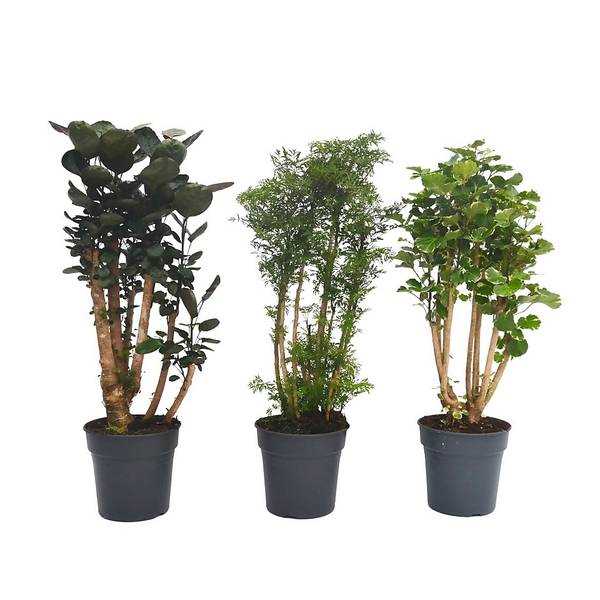
To ensure your polyscias thrive indoors, it’s essential to provide them with the right care:
- Light: Polyscias prefers bright, indirect light. Avoid placing them in direct sunlight, as this can scorch their leaves. They can tolerate lower light conditions, but growth may slow down.
- Watering: Allow the top inch or two of the soil to dry out before watering. Avoid overwatering, as this can lead to root rot. Polyscias prefer slightly moist soil, but they can withstand short periods of drought.
- Humidity: Polyscias plants enjoy higher humidity levels, so consider misting them or placing a humidifier nearby, especially during dry winter months.
- Temperature: Polyscias prefer temperatures between 65-80°F (18-27°C). Avoid exposing them to drafts or extreme temperature fluctuations.
- Fertilization: Feed your polyscias with a balanced houseplant fertilizer every month during the growing season (spring and summer). Follow the package instructions for dosage.
- Pruning: Trim back leggy or unruly growth to maintain a compact shape. Pruning can be done throughout the year, but it’s best to avoid extensive pruning during winter months.
Popular Varieties of Polyscias
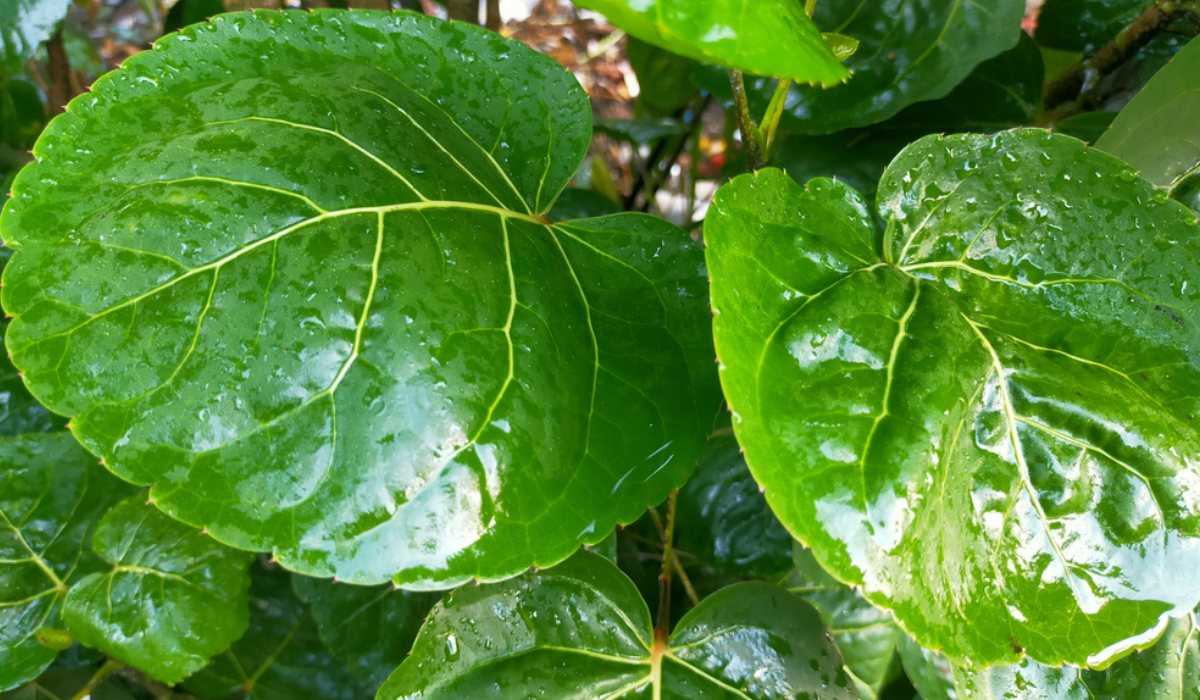
There are various species and cultivars of polyscias, each with its unique appearance. Some popular varieties include:
| Variety | Description |
|---|---|
| Polyscias fruticosa | Also known as Ming Aralia, it has delicate, fern-like foliage and a compact growth habit. |
| Polyscias balfouriana | Commonly known as Balfour Aralia, it has large, elongated leaves with a beautiful green color. |
| Polyscias scutellaria | Also known as Shield Aralia, it has unique shield-shaped leaflets and a bushy growth habit. |
These are just a few examples of the many polyscias varieties available. Each one offers its unique charm and can be a great addition to your indoor plant collection.
Q&A:
What is Polyscias?
Polyscias is a genus of plants in the Araliaceae family, commonly known as aralia or umbrella tree. There are many different species within this genus, each with its own unique characteristics and care requirements.
How do I identify different species of Polyscias?
Identifying different species of Polyscias can be challenging as there are many variations in leaf shape, color, and overall plant size. However, some common species include Polyscias fruticosa, Polyscias guilfoylei, and Polyscias scutellaria. It’s best to consult with a plant expert or refer to a comprehensive plant identification guide for more detailed information.
What are the care requirements for Polyscias plants?
Polyscias plants thrive in bright, indirect light and prefer well-draining soil. They should be watered thoroughly when the top inch of soil feels dry. These plants also appreciate high humidity, so misting their leaves or placing them on a tray of water-filled pebbles can help create a more favorable environment. Additionally, it’s important to avoid exposing Polyscias plants to cold drafts or temperature extremes.
Can Polyscias be grown indoors?
Yes, Polyscias plants can be grown indoors as they tolerate lower light conditions. However, they still require bright, indirect light to maintain their health and appearance. Placing them near a window with filtered sunlight or using artificial grow lights can help meet their light needs.
How do I propagate Polyscias plants?
Polyscias plants can be propagated through stem cuttings or air layering. To propagate through stem cuttings, take a 4-6 inch cutting from the tip of a healthy plant and place it in a moist potting mix. Keep the cutting in a warm and humid environment until new roots form. Air layering involves creating a wound in the plant’s stem and wrapping it with moist sphagnum moss. Roots will develop in the moss, and the new plant can be separated and potted once well-established.
What are some common pests and diseases that affect Polyscias plants?
Polyscias plants are susceptible to pests such as spider mites, mealybugs, and scale insects. Regularly inspecting the plant for any signs of pest infestation and promptly treating them with appropriate insecticides or natural remedies is essential. Additionally, these plants can suffer from root rot if overwatered or exposed to overly soggy soil. Providing proper drainage and allowing the soil to dry out slightly between waterings can help prevent this issue.
Are Polyscias plants toxic to pets?
Yes, some species of Polyscias plants are considered toxic to pets, particularly cats and dogs. Ingesting these plants can cause gastrointestinal upset, drooling, and other symptoms. It’s best to keep these plants out of reach of pets or opt for pet-safe alternatives if you have furry friends at home.
Video:
The SIX Most Reliable Terrarium Plants
